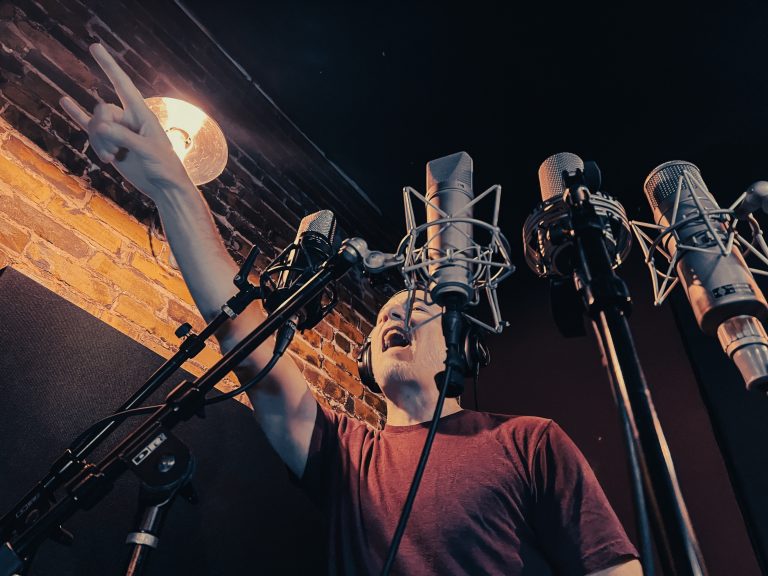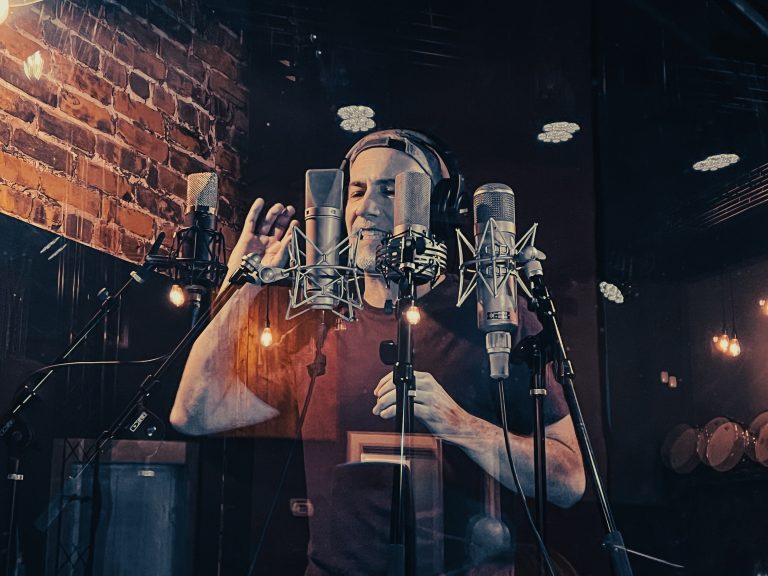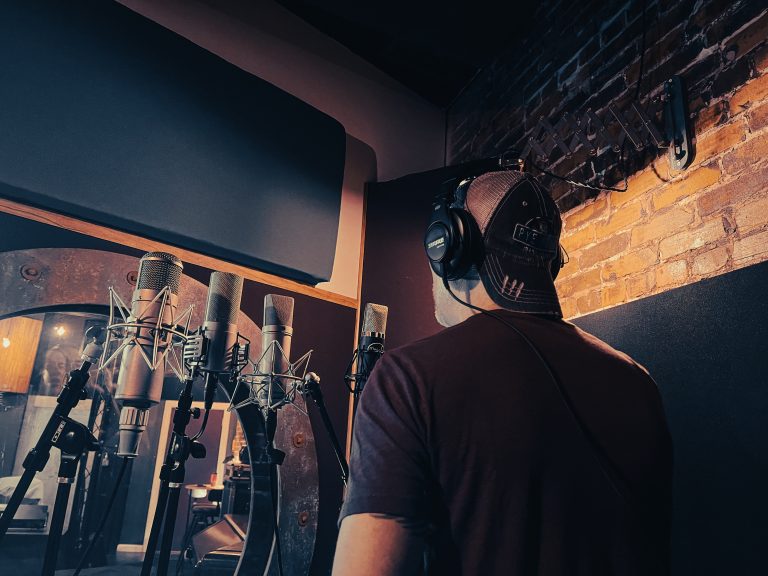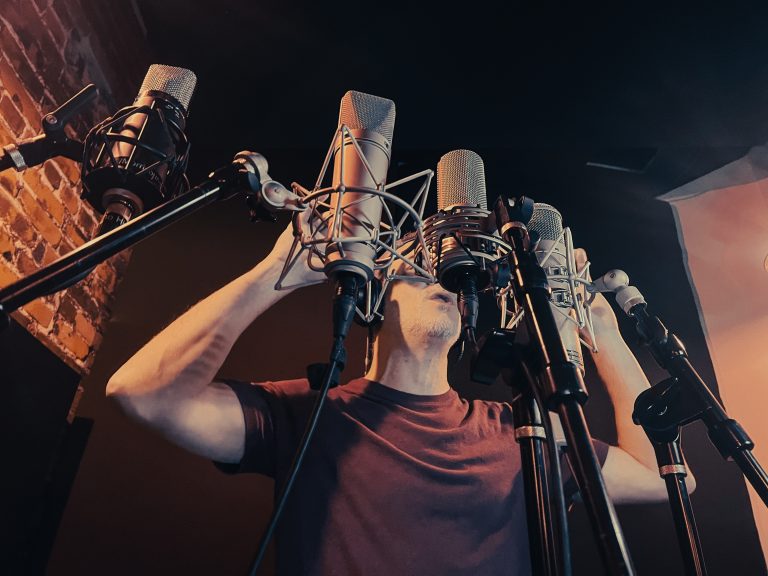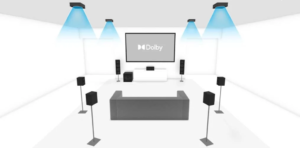Posted by Taylor Ramone on March 2, 2022
Some recent thoughts on mic shootouts from the (alleged) mind of Jim Morris:
One procedure we find very useful in the recording process is microphone selection. Choosing the best microphone for a particular application can be a valuable contribution to the sound quality and effectiveness of any recording. Different microphones each have their own strengths and weaknesses. With so many different types, brands, and technologies available, mic selection can be a daunting and even confusing process. To help clarify the right selection, we will sometimes “shootout” microphones when starting with a new client or when looking for a unique vibe on a particular sound.
In these pictures, you can see how we ran a mic shootout on vocals with Danny Langfield from the band Pinball Hustlers using (ordered from brick wall to door) a modern tube-based condenser Mojave MA-300, the universal classic Neumann U-87, a revolutionary new condenser design by Audio-Technica the AT5047, and of course the grandfather of high-quality tube mics, a vintage Neumann U-47 (circa 1952).
We look for two things: 1) what the singer feels the best performing on and 2) which microphone’s characteristics bring out the most desirable qualities in a singer’s voice. For example, are we looking for more high frequency clarity? Richer lower frequencies? Better control over the mid range?
We have found there are some straightforward techniques we can use to help streamline the process:
- Be patient. If you try to hurry through this, you will either skew your results or sometimes even fail to get useful results of any kind.
- Level the playing field. In trying to track a similar or even identical performance on different mics, spend the time to match the recording levels carefully. Sometimes a mic that sounds “better” is actually just louder. This is an easy way to deceive your ears.
- Choose preamps that are the most transparent and colorless.
- Match the mic preamp. When I do this, I make sure to use identical preamps for each mic. This of course requires that you have a sufficient number of identical mic preamps, like you can see below:
(For those curious, we ended up choosing the vintage Neumann U-47)

